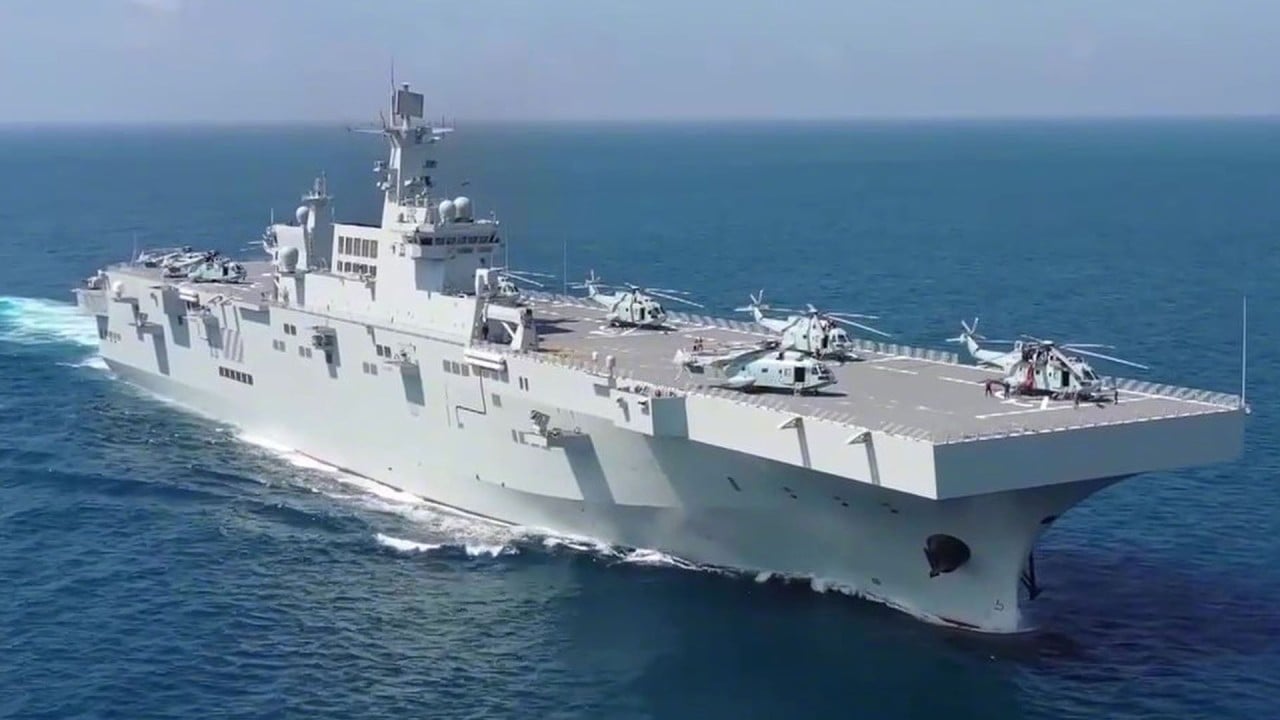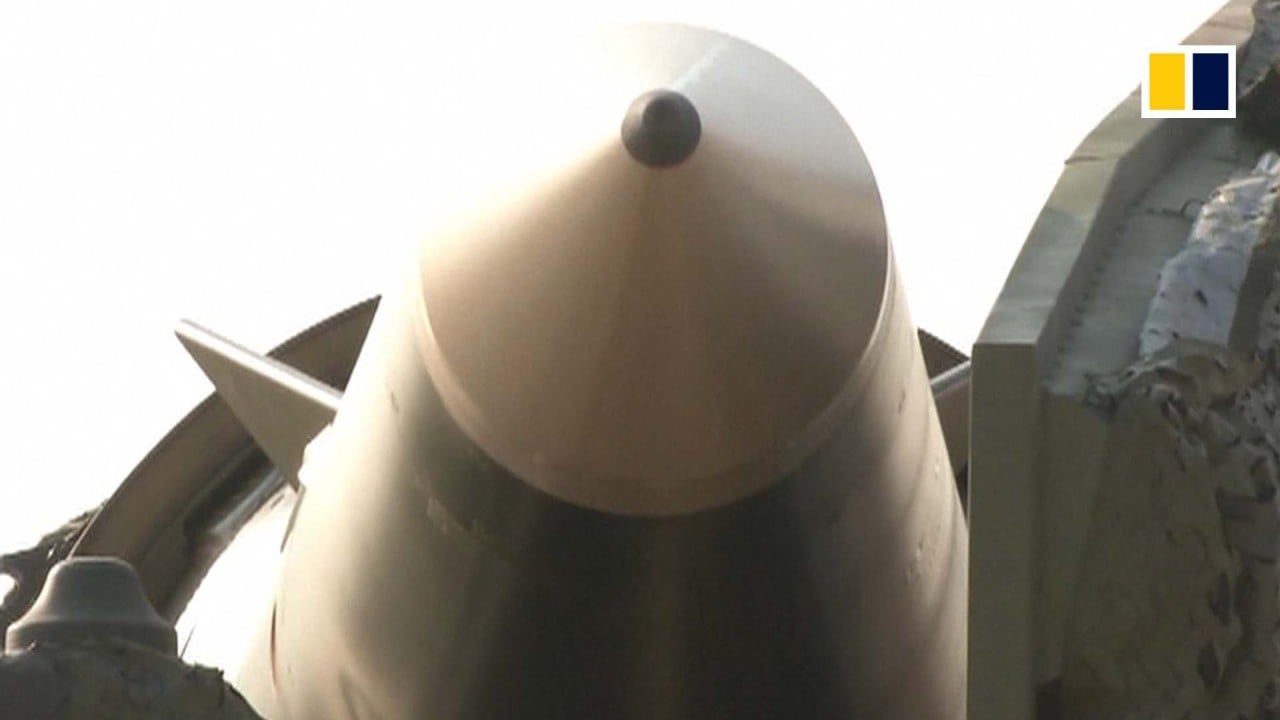
China’s rocket force tests ‘carrier killer’ DF-26 ballistic missiles
- Video of PLA rocket force training shows rapid-response drill deploying missiles with 4,000km range that can be used in nuclear or conventional strikes
- Showing enhanced strike capability against naval vessels sent a warning to foreign forces ‘not to meddle in China’s core interests’, says military analyst
In the exercise, the brigade practised the fast transfer of missiles to another location to launch a second wave of missiles, a drill to train the brigade’s fast-response capabilities, the report said.
A drone was visible in the drill helping the brigade target objects.
The missiles featured in the exercise were DF-26s, according to footage in the online report. The DF-26 has a range of 4,000km (2,485 miles) and can be used in nuclear or conventional strikes against ground and naval targets.
Its dual-capable missile is a type of weapon banned by the Intermediate-Range Nuclear Forces Treaty signed by the US and former Soviet Union towards the end of the Cold War. When the US withdrew from the treaty in 2020, it cited China’s deployment of such weapons as justification.
China is building more underground silos for its ballistic missiles
Song Zhongping, a Hong Kong-based military expert and a former PLA instructor, said the exercise indicated that China’s rocket force were training to strike big-surface ships, vessels that posed a real threat to China right now.
“China’s rocket force has been trained to launch various missiles, and the DF-26 is one that can strike aircraft carriers at sea, where China’s biggest threat comes from,” Song said.
“Enhancing the striking capabilities against naval vessels can be a warning to other countries, telling them not to meddle in China’s core interests. And it can also enhance China’s deterrence.”
In August, China launched two “aircraft carrier killer” missiles – including a DF-26 – into an area near the Paracel Islands in the South China Sea as a warning to the US which had previously sent two aircraft carrier strike groups.
The exercise could improve missile operators’ skills and enhance the force’s ability to survive, said Deng Kuan, a sergeant, according to the China Radio International report.
“The fast missile transfer practice requires each of us to have better skills and demands us to improve precision so we can save time to carry out other assault operations, and it improves the ‘survivability’ in a real battlefield,” Deng said.
Colonel Jiang Feng, the deputy commander of the brigade, said the rocket force frequently carried out night exercises to test whether the force had mastered the required skills.
“We have been holding night exercises on a regular basis recently, which usually continues until early the next day. We often change training grounds, striking targets and launch bases without prior notice to test the troops’ skills and pave the way for the brigade to fight, and be able to fight at any time,” Jiang said.



